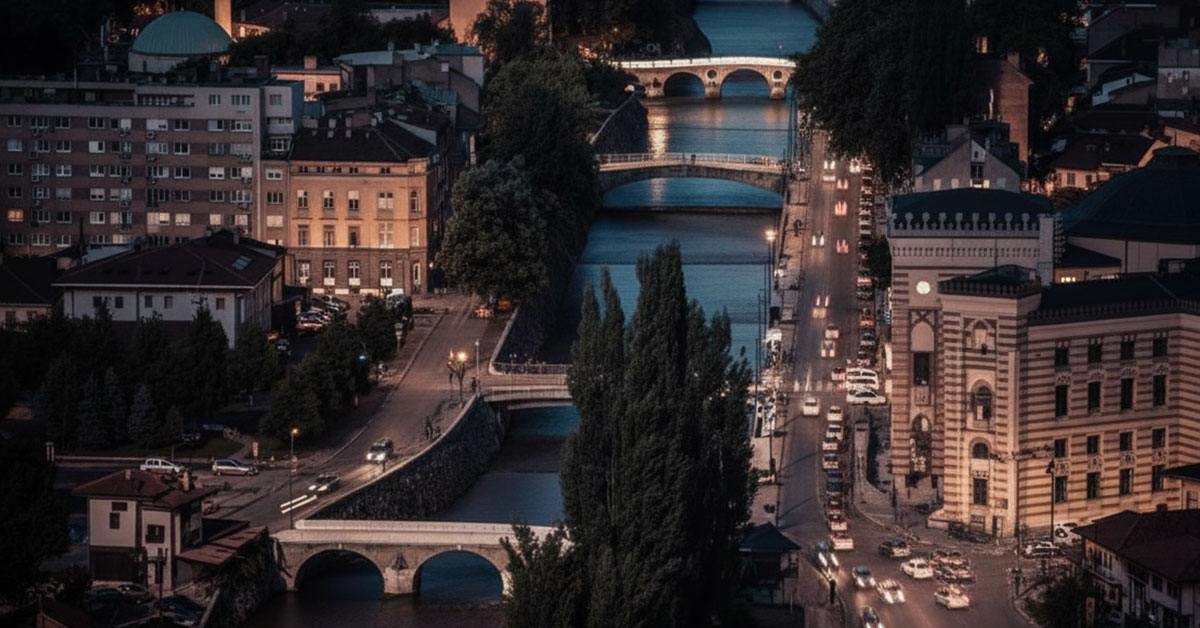Sarajevo is a city best discovered on foot. If you ask the locals where to start, many will say: “Walk along the Miljacka, and cross the bridges.”
Here, bridges are not just crossings over the river. They are pages of history. Some witnessed emperors, some assassins, some lovers, and some the blood and pain of war. Together, they form the city’s nervous system. Let’s explore five bridges you simply must see when you come to Sarajevo. Each has its own structure, height, material, and unique story that will make you pause.
Table of Contents
Latin Bridge: A Bridge of Fate and World History
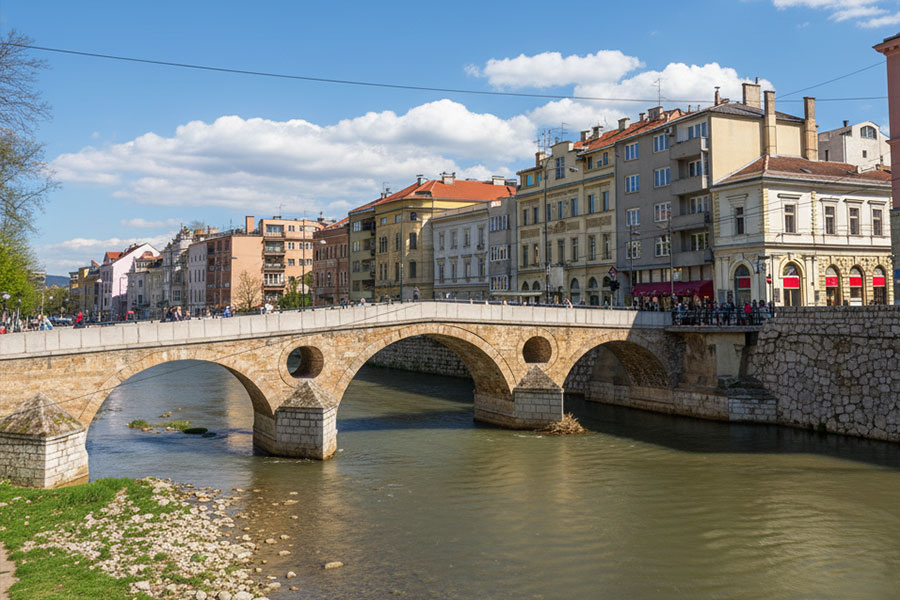
At first glance, it looks like a simple stone bridge with four arches. But once you step on it, you realize you’re standing where the 20th century began.
Built in the mid-16th century, Latin Bridge was constructed from local stone and mortar. Ottoman masters created an elegant structure of four arches rising about 4 meters above the Miljacka.
It was rebuilt several times. After the great flood of 1791, it was seriously damaged, and in 1798 it was restored by Sarajevo merchant Abdulah-aga Briga. Despite centuries of floods and wars, its structure still stands strong.
The most famous moment in its history happened on June 28, 1914. At the northern end of the bridge, Gavrilo Princip shot Archduke Franz Ferdinand and his wife Sophie. That assassination triggered a chain of events leading to World War I.
Today, the contrast is striking: tourists calmly strolling and taking selfies, while once, gunshots here changed the world.
Visitor tip: Visit at sunset when the light hits the Miljacka. Explore the nearby Museum of the Assassination, then enjoy a plate of Sarajevo ćevapi in one of the riverside taverns. History and gastronomy in a single evening.
Suada and Olga Bridge: A Symbol of Resistance and Sacrifice
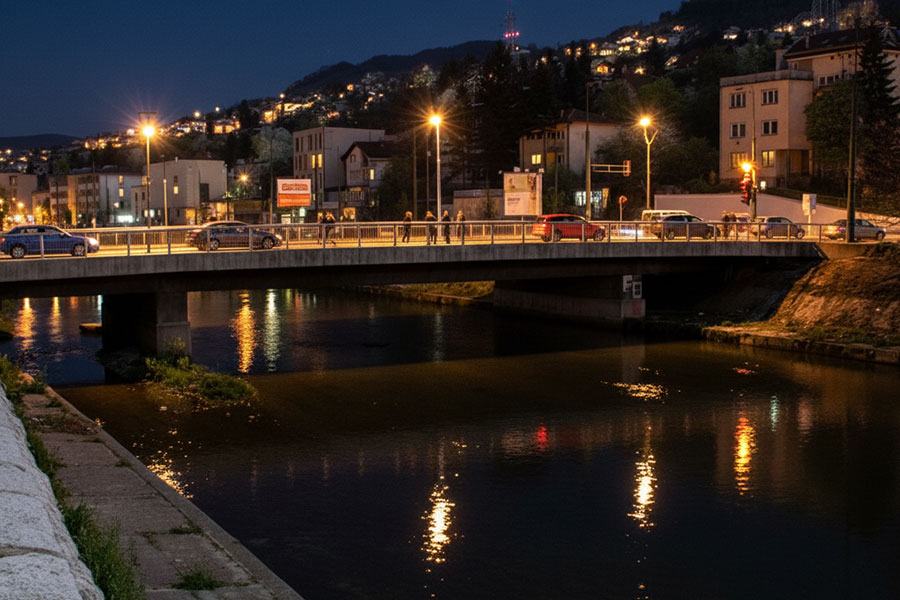
If Latin Bridge symbolizes global history, the Suada and Olga Bridge is Sarajevo’s symbol of pain and resistance.
Built in the 1980s from reinforced concrete and steel, it rises about five meters above the river. Originally just a functional crossing between Marijin Dvor and Grbavica, its destiny turned deeply human.
On April 5, 1992, students Suada Dilberović and Olga Sučić were shot and killed here while protesting for peace. They became the first civilian victims of the Siege of Sarajevo, and in 1993 the bridge was renamed in their honor.
Renovated in 1995, the bridge still carries a memorial plaque. This is also the site of the tragic love story of Sarajevo’s “Romeo and Juliet” – Boško and Admira, killed while trying to escape the besieged city.
The contrast is immediate: cold concrete versus burning emotions. No ornate arches or decorations – only names and memories that remind us bridges can mark the line between life and death.
Visitor tip: Walk across it slowly. Read the plaque. Continue toward the City Hall (Vijećnica) or the National Library. This is not a bridge for quick photos – it demands silence and reflection.
Festina Lente: The Bridge that Dances with Time
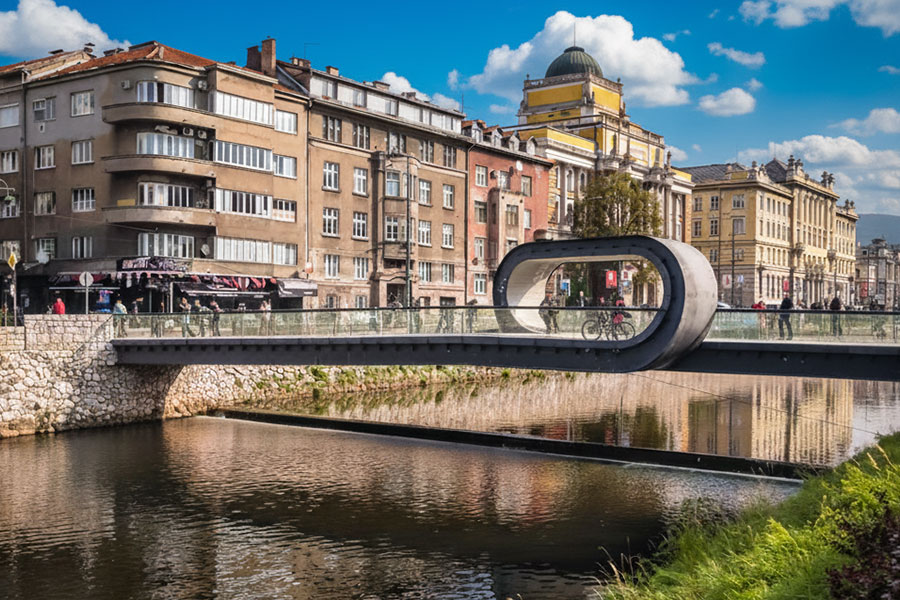
If you seek contrast between old and new, Festina Lente is its definition.
Opened in 2012, this pedestrian bridge was designed by students of the Academy of Fine Arts. Built from steel, aluminum, and glass, it stretches 38 meters, with a loop in the middle that hides a bench for rest.
Its Latin name means “Make haste slowly.” The bridge teaches you just that: even while rushing, stop, sit down, watch the river, and breathe.
At night, LED lights turn it into a glowing sculpture. While the old stone bridges are dark and heavy, Festina Lente is light, airy, and modern. It symbolizes Sarajevo that honors its past but builds a vibrant new culture.
Visitor tip: Perfect for photos, especially at night. Located next to the Academy of Fine Arts – combine your visit with galleries and workshops. For lovers of design and architecture, this is a must-see.
Goat’s Bridge (Kozija Ćuprija): The Ancient Traveler from Ottoman Times
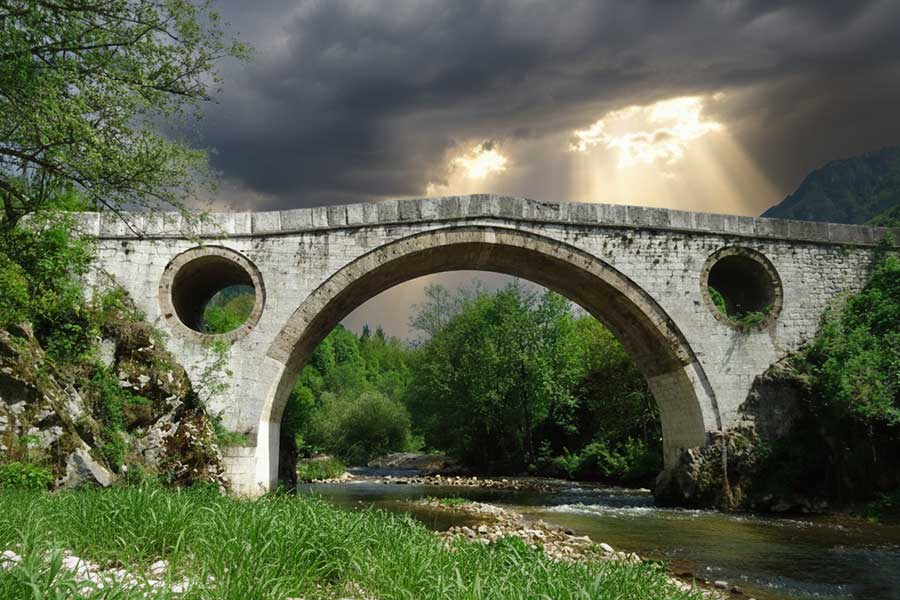
Leave the city center and follow the Dariva promenade to discover one of the oldest preserved bridges – Goat’s Bridge.
Built in the 16th century, it features a single large stone arch, 42 meters long and nearly 5 meters wide, rising about 5 meters above the river. Constructed from white limestone blocks, joined with traditional mortar, it was designed to withstand floods and caravans.
This bridge once formed part of the trade route leading to Istanbul. Caravans crossed here, and legend says goats unearthed treasure used for its construction.
Today, Goat’s Bridge offers peaceful contrast to Sarajevo’s bustle. Surrounded by greenery and hikers, it is a retreat into nature and history. The sound of the river and birds makes you feel far away, though you’re only a few kilometers from Baščaršija.
Visitor tip: Come by bike or on foot. Bring a camera. Nearby restaurants serve traditional lamb dishes – perfect after a hike. A bridge for adventurers and romantics.
Eiffel Bridge: A Parisian Touch in Sarajevo
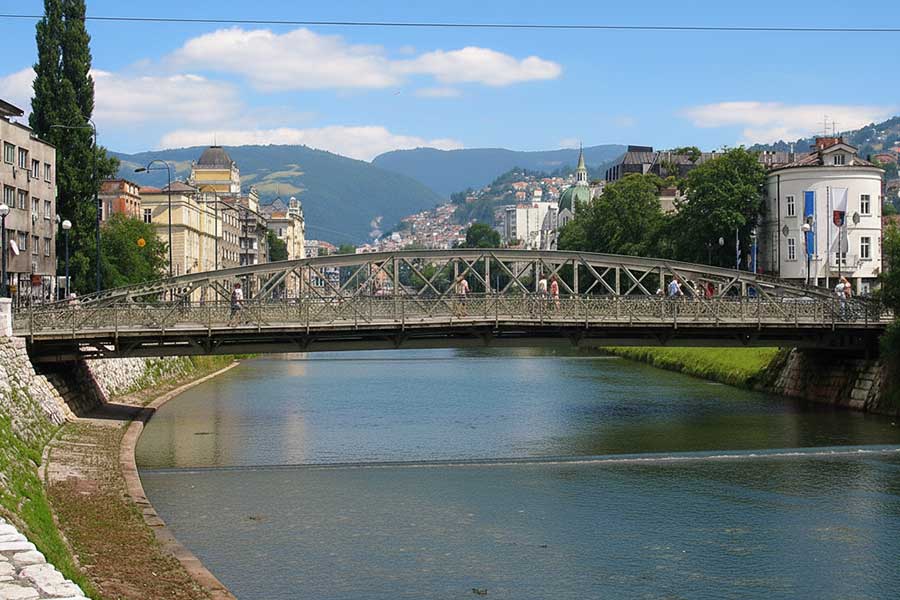
Less known but fascinating, Eiffel Bridge was built in 1893 during Austro-Hungarian rule.
According to legend, it was designed by Gustav Eiffel or his associates. The steel truss structure, about 6 meters high, was assembled using riveted iron parts imported from France. Construction lasted only a year.
Though modest compared to the Eiffel Tower, the bridge survived wars, repairs, and graffiti. Today, it remains a pedestrian crossing, blending 19th-century engineering with 21st-century street art.
Visitor tip: Located near Skenderija, it’s perfect to combine with concerts, exhibitions, or shopping. Especially atmospheric for evening walks.
Other Bridges of Sarajevo
| Bridge | Year | Material / Type | Note |
| Šeher-Ćehaja Bridge | 1585/86 | stone, Ottoman arches | The oldest preserved bridge, national monument. |
| Drvenija | 1898 | wood + concrete | Busy pedestrian bridge in the city center. |
| Čobanija | 1887 (rebuilt 1998) | iron | Near the National Theatre, Austro-Hungarian period. |
| Emperor’s Bridge (Carev most) | 15th century (later rebuilds) | stone | Next to the Emperor’s Mosque, historic importance. |
| Roman Bridge (Ilidža) | Ottoman period | stone | Part of the old road to Blažuj and Ilidža. |
| Skenderija Bridge | 20th century | concrete + steel | Next to Skenderija cultural and sports center. |
| Ćumurija Bridge | Ottoman period | stone (renovated) | One of the old central crossings. |
| Hastahana Bridge | modern | concrete | Small urban crossing. |
| Bridge near City Hall (Vijećnica) | reconstructed | mixed materials | Links the Old Town to the riverside boulevard. |
Our Most Popular Tours To Sarajevo
We offer many tours that include a visit to Sarajevo and its most popular locations:
- Sarajevo Siege Tour & War Tunnel 1992 / 1996 (Most Popular)
- Full Day tour from Sarajevo to Međugorije & Mostar
- Full Day Tour from Sarajevo to Travnik and Jajce
- Full-Day 5 Cities Tour from Sarajevo to Herzegovina (Mostar)
- Full day Tour from Sarajevo to Dubrovnik (Kotor or Split)
- Full Day tour from Sarajevo to Belgrade
Don’t Hesitate To Say Hi!
Got any questions about our tours or the city? Don’t hesitate to contact us anytime for more info and booking.
Use the following phone number and email:

